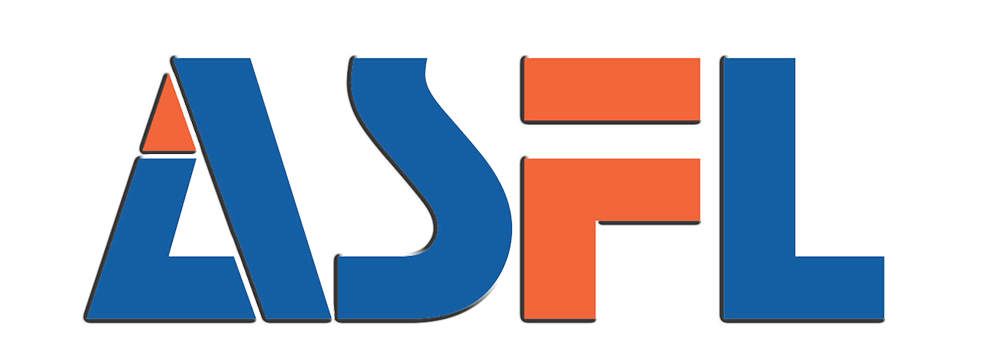The Critical Role of Preventive Maintenance for Bottle Filling Machine Longevity
How Preventive Maintenance Extends the Lifespan of Bottle Filling Machines
Regular maintenance routines such as lubrication cycles and seal replacements prevent premature wear in bottle filling equipment. Systematic inspections of piston rods and material cylinders—aligned with industry guidelines—reduce abrasive damage by 22% annually (Ponemon 2023).
Reducing Unplanned Downtime with Routine Maintenance Procedures
Proactive maintenance slashes unplanned stoppages by 53%, according to Deloitte's analysis of glass production systems. Facilities that implement daily vibration checks and temperature monitoring reduce emergency repairs by 60% compared to reactive-only approaches.
Data Insight: Facilities with Structured Maintenance Logs See 40% Fewer Breakdowns
Organizations documenting valve adjustments and conveyor alignments in digital logs resolve issues 30% faster. This practice correlates with a 15% improvement in annual throughput for beverage manufacturers.
The Cost Paradox: Cutting Maintenance Saves Money Short-Term but Increases Long-Term Expenses
Skipping quarterly calibrations might save $2,400/year initially but leads to $18,000 in unplanned repairs over three years. Studies show preventive maintenance extends equipment lifespan by 40%, delivering a 4:1 ROI over seven years.
Daily and Weekly Care: Cleaning and Inspection Routines for Optimal Performance
Daily Cleaning Protocols to Prevent Contamination in Liquid Bottle Filling Machines
Starting every production run with a thorough wipe down of those filling nozzles and all surfaces that touch the actual product makes sense if we want to keep things safe. Leftover bits of stuff tend to stick around in these areas and become little bacterial party spots over time. When dealing with fast moving lines for milk products or drinks, operators need to get into those tight spots between parts where microbes love to hide out. According to some recent research published last year, getting cleaning done within half an hour after shutting down equipment cuts down on contamination problems by nearly three quarters. Makes sense really because bacteria don't take long to start multiplying once conditions are right for them.
Step-by-Step Sanitation of Nozzles and Product-Contact Surfaces
- Isolate electrical components to prevent liquid damage
- Disassemble nozzle clusters using manufacturer-approved tools
- Soak parts in alkaline cleaner (pH 9–11) for 15 minutes
- Rinse thoroughly with deionized water to avoid mineral deposits
- Air-dry under HEPA-filtered airflow before reassembly
Post-Shift Checks: Monitoring Fluid Levels and Nozzle Integrity
After every 8-hour cycle, verify the following:
- Hydraulic oil viscosity (≥ 45 cSt at 40°C)
- Filling nozzle alignment (±0.5mm tolerance)
- Seal compression (85–90% of original thickness)
Weekly Inspection of Conveyor Belts, Actuators, and Bottle Guides
| Component | Inspection Focus | Acceptable Tolerance |
|---|---|---|
| Conveyor Belts | Tension, tracking | ±3mm center alignment |
| Pneumatic Actuators | Cycle consistency | <2% pressure drop per cycle |
| Bottle Guides | Surface wear | ≥0.1mm depth variation |
Case Study: A Beverage Plant Reduced Malfunctions by 35% Using Weekly Checklists
A Midwest juice bottler implemented ISO 18436-3 vibration analysis during weekly inspections, identifying 89% of bearing failures before catastrophic breakdowns. Their 18-point checklist reduced corrective maintenance hours from 14 to 9 weekly, saving $217,000 annually in downtime costs (Plant Engineering Report 2023).
Monthly Calibration and Lubrication for Consistent Filling Accuracy
Calibrating volumetric filling systems for precise fill volumes
Consistent calibration ensures exact dispensing across thousands of cycles. A 1% deviation in a 500ml fill wastes 5ml per container—costing over $12,000 annually in a 10,000-unit/day operation. Modern systems use pressure sensors and flow meters to maintain accuracy, with automated alerts triggered when deviations exceed ±0.5% (FDA 2023 guidelines).
Ensuring batch-to-batch consistency through regular calibration techniques
Monthly calibration prevents drift caused by temperature fluctuations, viscosity changes, or mechanical wear. Operators compare machine outputs against certified measurement tools and adjust pump speeds or valve timings accordingly. Facilities following this practice report 15% fewer product recalls due to fill volume errors.
Following technical manuals for correct machine setup and adjustments
Manufacturer guidelines specify torque settings for nozzle assemblies, conveyor alignment tolerances, and sensor calibration sequences. Deviating from these protocols often results in uneven fills or spillage—the leading cause of downtime in high-speed beverage lines.
Trend: How automated calibration alerts improve precision in modern bottle filling machines
Advanced systems now self-adjust using real-time data from load cells and vision systems. For example, machines detecting frothy liquids automatically extend dwell times to stabilize fill levels before sealing. This reduces human intervention while maintaining ±0.25% accuracy even under challenging conditions.
Lubricating moving parts to prevent friction, wear, and overheating
Critical components like capping heads and rotary valves require food-grade lubricants applied on a scheduled basis. A leading dairy plant extended bearing life by 40% after switching to synthetic lubricants rated for cold environments (-20°C to 120°C).
Developing a lubrication schedule based on manufacturer recommendations
| Factor | Standard Interval | High-Use Adjustment |
|---|---|---|
| Rotary joints | 400 hours | 250 hours |
| Linear guides | 600 hours | 400 hours |
| Gearboxes | 1,200 hours | 800 hours |
Schedules should reflect production intensity—high-speed lines (20,000+ bottles/hour) often require lubrication 30% more frequently than standard systems.
Avoiding pitfalls: The risks of over-lubrication vs. under-lubrication in high-speed lines
Excess grease attracts dust and increases valve clogging risks, while insufficient lubrication causes scoring in piston chambers. The optimal approach uses precision applicators to deliver 0.1–0.3ml per lubrication point, as validated in a 2024 packaging industry study comparing maintenance methods.
Proactive Component Replacement and Maintenance Documentation
Identifying Early Signs of Seal Degradation and Valve Leakage
Regular inspections help detect early signs of failure, including uneven fills, fluid seepage, cracks in elastomer seals, mineral buildup on valve seats, or inconsistent pressure readings. Subtle changes—such as a 5–10% drop in line pressure over 48 hours—are often precursors to complete seal failure and warrant immediate investigation.
Replacing Worn Seals and Valves Before Catastrophic Failure
Proactively replacing components at 80–90% of their rated lifespan prevents unplanned stoppages. Facilities that replace high-wear parts preemptively reduce repair costs by $18,000 annually per production line. For instance, silicone seals in acidic beverage lines typically last 6–8 months and should be replaced before performance declines.
Strategy: Keeping Common Replacement Parts in Stock to Minimize Downtime
Stock critical spares such as:
- Food-grade O-rings (multiple sizes)
- Solenoid valve coils
- Nozzle gaskets
- Pressure regulators
This strategy reduced troubleshooting delays by 72% in dairy bottling plants, enabling rapid response during emergencies.
Documenting All Maintenance Activities for Compliance and Traceability
Use standardized logs to track key metrics:
| Metric | Recording Frequency | Purpose |
|---|---|---|
| Seal replacement dates | Real-time | Warranty validation |
| Valve torque settings | After adjustments | Consistency across shifts |
| Lubrication intervals | Weekly | Audit readiness |
Facilities with digital maintenance histories resolve FDA non-conformance reports 3.2× faster than those relying on paper records.
Training Operators to Improve Response Times and Maintenance Accuracy
Quarterly workshops covering leak diagnostics and seal installation techniques reduced component misalignment errors by 41% in a 12-month packaging study. Role-playing valve replacement scenarios enhances real-world problem-solving and reinforces best practices.
Using Digital CMMS Tools for Preventive Maintenance Scheduling and Planning
Integrate Computerized Maintenance Management Systems (CMMS) to automate:
- Replacement reminders based on machine runtime hours
- Inventory level alerts for stocked parts
- Compliance checklists for ISO 9001 audits
Plants using CMMS achieve 93% adherence to scheduled maintenance, compared to 67% with manual tracking.
Best Practices in Maintenance Logs and Record Keeping
- Tag each entry with equipment ID and technician initials
- Attach photos of worn seals or valves prior to replacement
- Store records for at least seven years to meet regulatory requirements
- Conduct quarterly log reviews to identify recurring failure patterns
This systematic approach helped a Midwest bottler cut annual valve-related downtime by 58 hours through trend analysis of 2023 maintenance data.
Frequently Asked Questions (FAQ)
What is preventive maintenance for bottle filling machines?
Preventive maintenance involves regular inspections, cleaning, adjustments, and component replacement to ensure bottle filling machines operate efficiently and to extend their lifespan.
Why is lubrication important in preventive maintenance?
Lubrication prevents friction, wear, and overheating of machine parts, which helps in maintaining operational efficiency and prolonging the equipment's life.
How does calibration affect bottle filling machines?
Calibration ensures precise fill volumes, which is critical for consistency across production batches and minimizing product recall risks due to fill errors.
Table of Contents
-
The Critical Role of Preventive Maintenance for Bottle Filling Machine Longevity
- How Preventive Maintenance Extends the Lifespan of Bottle Filling Machines
- Reducing Unplanned Downtime with Routine Maintenance Procedures
- Data Insight: Facilities with Structured Maintenance Logs See 40% Fewer Breakdowns
- The Cost Paradox: Cutting Maintenance Saves Money Short-Term but Increases Long-Term Expenses
-
Daily and Weekly Care: Cleaning and Inspection Routines for Optimal Performance
- Daily Cleaning Protocols to Prevent Contamination in Liquid Bottle Filling Machines
- Step-by-Step Sanitation of Nozzles and Product-Contact Surfaces
- Post-Shift Checks: Monitoring Fluid Levels and Nozzle Integrity
- Weekly Inspection of Conveyor Belts, Actuators, and Bottle Guides
- Case Study: A Beverage Plant Reduced Malfunctions by 35% Using Weekly Checklists
-
Monthly Calibration and Lubrication for Consistent Filling Accuracy
- Calibrating volumetric filling systems for precise fill volumes
- Ensuring batch-to-batch consistency through regular calibration techniques
- Following technical manuals for correct machine setup and adjustments
- Trend: How automated calibration alerts improve precision in modern bottle filling machines
- Lubricating moving parts to prevent friction, wear, and overheating
- Developing a lubrication schedule based on manufacturer recommendations
- Avoiding pitfalls: The risks of over-lubrication vs. under-lubrication in high-speed lines
-
Proactive Component Replacement and Maintenance Documentation
- Identifying Early Signs of Seal Degradation and Valve Leakage
- Replacing Worn Seals and Valves Before Catastrophic Failure
- Strategy: Keeping Common Replacement Parts in Stock to Minimize Downtime
- Documenting All Maintenance Activities for Compliance and Traceability
- Training Operators to Improve Response Times and Maintenance Accuracy
- Using Digital CMMS Tools for Preventive Maintenance Scheduling and Planning
- Best Practices in Maintenance Logs and Record Keeping
- Frequently Asked Questions (FAQ)





